In the world of the internet, where attention spans are shorter than ever, capturing readers’ attention is a challenge every blog writer faces.
While providing content continues to be an effective way to engage readers, one common question often arises: how long should a blog post be?
While there is no one-size-fits-all answer to this question, understanding the relationship between blog post length and reader engagement can help guide your content creation strategy.
This article explores various factors that influence the best length of a blog post, as well as practical tips to strike a balance between conciseness and comprehensive information.
The Ideal Blog Post Length
The average blog post length ranges from 1,000 to 2,000 words. This length allows for a more in-depth exploration of the topic, providing valuable insights and addressing readers’ questions and concerns.
Long-form blog posts have the advantage of covering a topic thoroughly, offering detailed explanations, examples, and actionable advice.
However, it’s important to note that longer doesn’t always mean better. The quality and relevance of the content are equally important as the length. Simply elongating a blog post without adding value or relevant information can lead to reader fatigue and reduced engagement.
Factors to Consider When Determining Blog Post Length
Determining how many words a blog post should have requires considering various factors that can influence reader engagement and the effectiveness of your content.
Target Audience
Your target audience is crucial when deciding the length of your blog posts. Consider the following aspects:
- Demographics and preferences: Analyze the demographics of your audience, such as age, gender, location, and interests. Additionally, take into account their choices regarding content consumption and length.
- Reading habits: Determine how your audience prefers to consume content. Do they enjoy longer, in-depth articles, or do they choose shorter, concise pieces? Consider factors like their attention spans, time availability, and reading habits to align your blog post length accordingly.
Content Type
Different types of content require varying lengths to convey the desired message and engage readers effectively.
- Informative articles: Complex or comprehensive topics often require longer blog posts to provide in-depth information and analysis.
- How-to guides: These types of posts usually benefit from longer formats, allowing you to provide detailed step-by-step instructions and include relevant visuals or examples.
- Listicles: List-based articles can vary in length depending on the number of items on the list and the depth of discussion for each item. Consider the list’s complexity and your audience’s attention span when determining the length.
- Opinion pieces: These articles can range from shorter, concise viewpoints to longer, more in-depth analyses, depending on the complexity of the topic and the depth of your arguments.
- Interviews: The length of blog posts featuring interviews may depend on factors such as the number of interviewees, the depth of questions, and the level of detail desired in the responses.
Industry or Niche
Consider industry or niche-specific factors that can influence how long should a good blog post be.
- Industry standards for blog post length: Research and analyze the blog posts of successful competitors or leaders in your industry to identify common trends or standards for blog post length.
- Competitive analysis: Understand how your competitors approach blog post length and engagement. Analyze their strategies and evaluate the length of their most popular or highly engaging posts.
SEO Considerations
To determine how long a blog post should be for SEO efforts, you need to factor in these aspects.
- Keyword usage: Longer blog posts often allow for more extensive keyword research and usage, helping search engines understand the topic and context of your content. However, ensure that your keywords flow naturally and avoid keyword stuffing.
- Google ranking factors: Google considers user experience and engagement metrics when ranking content. While length is not the sole determinant, longer, comprehensive blog posts often have higher chances of ranking well if they provide value and keep readers engaged.
Quality vs. Quantity
When it comes to blog post length, prioritize quality over quantity. Consider the following aspects:
- Balancing in-depth content with readability: Longer blog posts can provide comprehensive information, but they should also be well-structured, organized, and easy to read. Break down the content into sections, and use headings, bullet points, and visuals to enhance readability.
- Avoid fluff and filler content: Don’t unnecessarily extend the length of your blog posts by including irrelevant or repetitive information. Every sentence and paragraph should contribute to the overall quality and value of the post.
Pros and Cons of Different Blog Post Lengths
When it comes to blog post length, there are various options to consider, each with its own set of advantages and disadvantages.
Short Blog Posts (300-600 words)
Pros
- Quick to read: Short blog posts are easily digestible and can be consumed within a few minutes. They cater to readers with limited time or shorter attention spans.
- Easy to produce: With fewer words to write, short blog posts require less time and effort for content creation. They can be useful for maintaining a consistent publishing schedule.
Cons
- Limited information: Due to their brevity, short blog posts may only scratch the surface of a topic, providing a general overview without delving into detailed explanations or analysis.
- Lower SEO value: Search engines prioritize longer, more comprehensive content for higher rankings. Short blog posts may have limited SEO value and face tougher competition in search engine results.
Medium Blog Posts (600-1,200 words)
Pros
- More informative: Allows you to explore a topic in greater detail, providing more substantial information and addressing reader questions more thoroughly.
- Better SEO value: Performs well in search engine rankings, as they can incorporate relevant keywords, headers, and more comprehensive content that satisfies search intent.
Cons
- Longer production time: Creating medium-length blog posts requires additional research, organization, and writing time. It may take longer to produce these posts compared to shorter ones.
- Potential for reader fatigue: While medium-length posts offer more information, there is a risk of overwhelming readers with excessive content. Ensuring readability and maintaining engagement throughout the post becomes crucial.
Long Blog Posts (1,200-2,500+ words)
Pros
- In-depth content: Long blog posts provide ample space to explore a topic comprehensively, offering detailed explanations, examples, case studies, and supporting evidence. They can establish you as an authority in your niche.
- High SEO value: Search engines often prioritize longer, high-quality content. Long blog posts have the potential to rank well in search results, attracting organic traffic and backlinks.
Cons
- Longer production time: Writing longer blog posts requires significant time and effort. Extensive research, planning, and careful crafting of content are necessary to maintain quality throughout the post.
- Potential for reader fatigue: Longer blog posts run the risk of overwhelming readers or causing them to lose interest. Ensuring proper formatting, using headings, and incorporating visual elements can help enhance readability and maintain engagement.
By considering the pros and cons of different blog post lengths, you can choose the option that aligns with your content goals, audience preferences, and available resources. Remember, the quality and value of the content should always be prioritized, regardless of the chosen length.
Tips for Writing Blog Posts of Different Lengths
Writing blog posts of varying lengths requires adapting your approach to engage readers effectively and deliver value. Whether you’re crafting short, medium, or long blog posts, these tips will help you optimize your content creation process for each length category.
Writing Short Blog Posts
- Focus on a single topic: Due to limited word count, focus on one specific aspect or subtopic of a broader subject. This ensures clarity and prevents the content from feeling scattered or superficial.
- Use concise language: Choose words wisely and craft concise sentences. Eliminate unnecessary fluff and filler words to make every sentence count and maintain a sense of brevity.
- Stick to key points: Identify the key takeaways or main points you want to convey and prioritize them. Keep the content focused on these key points to deliver value efficiently.
Writing Medium Blog Posts
- Balance depth with readability: While medium-length blog posts allow for more in-depth coverage, they maintain readability by breaking down complex concepts into digestible sections. Use clear and concise language to ensure easy comprehension.
- Use subheadings and bullet points: Organize your content with subheadings that guide readers through the post’s structure. Utilize bullet points and numbered lists to break down information and improve scannability.
- Incorporate examples and case studies: Enhance the depth of your content by including relevant examples, case studies, or practical applications. These help illustrate your points and provide real-world context for readers.
Writing Long Blog Posts
- Break content into sections: Structure your long blog posts into logical sections with clear subheadings. This facilitates easy navigation and allows readers to skim or jump to specific sections of interest.
- Use visuals and multimedia: Long posts benefit from visual elements such as images, charts, infographics, or videos. Visuals break up the text, enhance engagement, and provide additional context or explanations.
- Include internal links: Long posts provide opportunities to reference and link to relevant content within your blog or website. Internal linking improves user experience, helps readers explore related topics, and increases time spent on your site.
Regardless of the length, always focus on providing value to your readers. Edit and revise your content to ensure clarity, coherence, and overall quality. Tailor your writing style and depth of information to suit the length category while maintaining a consistent voice and tone throughout your blog posts.
Create and Publish Engaging Blog Posts
Finding the answer on how long a blog post is crucial for engaging your audience and delivering valuable content.
Remember, short blog posts offer quick and easy-to-consume content, while medium blog posts strike a balance between depth and readability. Long blog posts provide in-depth exploration and high SEO value, but they require careful organization and attention to reader engagement.
If you are looking for the right partner, consider partnering with a leading content provider like LeadOrigin, an excellent choice for businesses in Austin, Dallas, and Houston.
With our expertise in delivering engaging and tailored content, we can provide valuable and data-driven insights on how long a blog post should be in 2023 as you embark on your content creation journey.
Whether you need blog posts, articles, or any other form of content, our team of experts can assist you in crafting compelling content that resonates with your target audience.
Don’t settle for mediocre content. Contact LeadOrigin’s experts today and elevate your business’s online presence with engaging and high-quality content.




